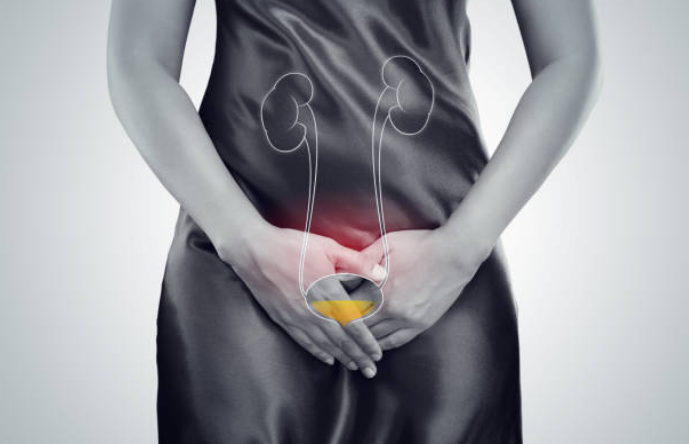What Is Interstitial Cystitis/Bladder Pain Syndrome?

Interstitial Cystitis (IC), also referred to as Bladder Pain Syndrome (BPS), is a chronic condition that causes discomfort or pain in the bladder and surrounding pelvic area. It is a complex condition characterized by a range of symptoms, such as frequent urination, urgency, and pressure in the bladder, often accompanied by pelvic pain. IC/BPS is a condition that primarily affects women but can also impact men, and it can range in severity, from mild discomfort to debilitating pain.
The exact cause of IC/BPS remains unclear, but researchers believe it could be related to bladder lining damage, autoimmune response, nerve dysfunction, or chronic inflammation. Unlike urinary tract infections (UTIs), IC/BPS doesn't have a clear infectious cause, making diagnosis and treatment challenging.
Symptoms of Interstitial Cystitis/Bladder Pain Syndrome
The symptoms of IC/BPS can vary widely from person to person. Some of the most common symptoms include:
- Painful Urination: A sharp or burning pain that occurs during urination.
- Frequent Urination: The need to urinate more often than usual, even during the night (nocturia).
- Pelvic Pain: Chronic discomfort in the bladder or pelvic region, which can be exacerbated by stress, physical activity, or certain foods.
- Urgency: An overwhelming, sudden need to urinate, often accompanied by discomfort.
- Bladder Fullness: A sensation of bladder fullness even after urinating.
The pain and symptoms may fluctuate in intensity, and they can worsen after certain triggers like stress, spicy foods, caffeine, or alcohol. This variability can make it difficult for individuals to predict flare-ups or manage their daily activities effectively.
Causes and Risk Factors of Interstitial Cystitis/Bladder Pain Syndrome
The exact cause of IC/BPS is not well understood, and it is thought to be the result of a combination of factors, including:
- Bladder Lining Defects: Some research suggests that people with IC/BPS may have a defect in the bladder lining, which normally acts as a protective barrier against irritants in urine. When this lining is damaged, it can lead to irritation and pain.
- Autoimmune Response: In some cases, the body's immune system may mistakenly attack the bladder tissue, leading to inflammation and pain. This can be linked to other autoimmune conditions like lupus or fibromyalgia.
- Nerve Dysfunction: Abnormal nerve signals may cause the bladder to overreact, leading to frequent urination and pain. This suggests that nerve involvement could play a significant role in IC/BPS.
- Infections: While IC/BPS is not caused by bacterial infections, some people with the condition may have a history of recurrent urinary tract infections (UTIs) or bladder inflammation, which could trigger or worsen the condition.
- Genetics: There is some evidence to suggest that a genetic predisposition may make certain individuals more susceptible to IC/BPS, though further research is needed to confirm this.
- Chronic Stress or Trauma: Emotional or physical stress may exacerbate the symptoms of IC/BPS, suggesting that stress management techniques could play a role in managing the condition.
Diagnosis of Interstitial Cystitis/Bladder Pain Syndrome
Diagnosing IC/BPS can be challenging since its symptoms overlap with other conditions, such as urinary tract infections (UTIs) or bladder cancer. A healthcare provider will typically begin by taking a detailed medical history and performing a physical examination. Several tests may be used to rule out other causes of symptoms, including:
- Urinalysis: A urine test can help detect any infections or blood in the urine.
- Cystoscopy: A procedure where a thin tube with a camera (cystoscope) is inserted into the bladder to examine the bladder lining. This can help rule out other issues like bladder cancer or stones.
- Hydrodistention: This procedure involves filling the bladder with fluid to stretch it and assess its reaction.
- Potassium Sensitivity Test: This test involves instilling potassium chloride into the bladder to see if it causes pain or discomfort, which can help diagnose IC/BPS.
There is no single definitive test for IC/BPS, so urologists may rely on a combination of tests and the process of elimination to make a diagnosis.
Treatment Options for Interstitial Cystitis/Bladder Pain Syndrome
While there is no cure for IC/BPS, several treatment options are available to help manage the symptoms and improve quality of life. Treatment often involves a multi-pronged approach, combining medications, lifestyle modifications, and physical therapy:
- Medications:
- Pain relievers: Over-the-counter medications like ibuprofen or stronger prescription painkillers can help manage discomfort.
- Antihistamines: These may reduce bladder inflammation in some individuals.
- Pentosan Polysulfate Sodium (Elmiron): A medication that can help protect the bladder lining.
- Tricyclic Antidepressants (TCAs): These medications can help relieve pain and discomfort by affecting nerve signals.
- Bladder Instillations: Medications are directly instilled into the bladder to reduce inflammation and pain.
- Pelvic floor therapy: Targeting pelvic muscle relaxation and strength can be useful for reducing pain and improving bladder control.
- Biofeedback: Helps individuals learn to control their pelvic floor muscles and manage bladder symptoms.
Lifestyle Modifications for Managing Interstitial Cystitis
Managing IC/BPS also involves making adjustments to daily habits and lifestyle to reduce symptoms and improve quality of life. Some tips include:
- Stress Management: Since stress can exacerbate symptoms, practicing relaxation techniques such as meditation, yoga, and deep breathing exercises can help manage stress levels.
- Physical Activity: Regular, low-impact exercise like walking or swimming can improve circulation, reduce stress, and promote overall well-being.
- Support Networks: Joining support groups or working with a therapist can provide emotional support and practical tips for coping with the condition.
By incorporating these lifestyle modifications, individuals with IC/BPS can better manage their symptoms and maintain a healthy, active life.
FAQs About Interstitial Cystitis/Bladder Pain Syndrome
1. Is Interstitial Cystitis common?
Yes, Interstitial Cystitis is relatively common, especially among women. It is estimated that about 3-8 million women in the U.S. are affected by the condition. While less common in men, it can still occur and often presents with similar symptoms.
2. Can IC/BPS be cured?
Currently, there is no cure for IC/BPS, but symptoms can be managed effectively with a combination of treatments, including medications, physical therapy, and lifestyle changes. Many individuals experience periods of remission where symptoms are minimal.
3. What foods should I avoid with IC/BPS?
Certain foods and drinks can trigger symptoms of IC/BPS, such as caffeine, alcohol, spicy foods, citrus fruits, and artificial sweeteners. It is essential to identify personal triggers and avoid them to reduce flare-ups.
Conclusion
Interstitial Cystitis/Bladder Pain Syndrome is a chronic condition that can significantly affect a person’s quality of life. Although the exact cause remains unknown, several treatment options are available to help manage symptoms and improve daily functioning. By working closely with a healthcare provider and adopting a multifaceted approach to treatment, including medication, physical therapy, and lifestyle modifications, individuals with IC/BPS can lead fulfilling lives while managing their condition effectively.

- Marketing & Social Media
- AI & Digital Tools
- Science & Innovation
- Business & Finance
- Education & Learning
- Technology & Gadgets
- Family & Relationships
- Parenting & Kids
- Fashion & Beauty
- Travel & Culture
- News & Politics
- Início
- Literature
- Music
- Networking
- Outro
- Party
- Religion
- Shopping
- Sports
- Theater
- Wellness
- Art
- Causes
- Crafts
- Dance
- Drinks
- Film
- Fitness
- Food
- Gardening
- Health
- Jogos



